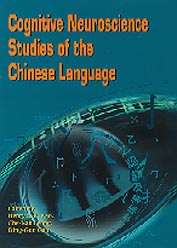- 定價87.00元
-
8
折優惠:HK$69.6

|
|
|
|
Cognitive Neuroscience Studies of the Chinese Language (HB)
|

|

沒有庫存
訂購需時10-14天
|
|
|
|

|
|
9789622095687 | |
|

|
|
Henry S. R. Kao, Che-Kan Leong, Ding-Guo Gao
| |
|

|
|
香港大學出版社 | |
|

|
|
2002年1月01日
| |
|

|
|
382.00 元
| |
|

|
|
HK$ 343.8
|
|
|
|
|

| |
|
|
|
|
| |
|
|
詳
細
資
料
|
|
|
分
類
|
[ 尚未分類 ] |
同
類
書
推
薦
|
|
|
內
容
簡
介
|
What are the linguistic constituents and structural components of Chinese characters and words? Does the spoken language provide a basis for reading different writing systems, including Chinese? How do the results of current neuroimaging and electrophysiological studies of processing Chinese converge with cognitive behavioural data? Are similar neurocognitive networks involved in reading alphabetic English and morphosyllabic Chinese? This volume brings together the related disciplines of neuroscience, cognitive psychology and psycholinguistics to explain some of the complex issues in understanding the processing of the Chinese language. Usingcurrent research findings and theories, chapters by leading researchers explore topics such as learning to read Chinese, word identification by readers of different skill and the development of Chinese vocabulary.
"Chinese and its Japanese kanji derivative are living writing systems in daily use by hundreds of millions of people, and thus deserve in their own right to be examined by the best available scientific methods. The approach taken in this volume brings the issues to a more general level with deep implications for our understanding of how the mind can meet the brain in complex cognitive functions. Cutting edge techniques in neuroimaging, electrophysiology, eye movement recordings, together with connectionist modelling and careful analyses of perceptual and orthographic features, are used to reveal and clarify the complex nature of the information processes involved in reading Chinese characters. It is indeed a fascinating story, where many prejudiced beliefs are challenged and new m...
|
|
|
書
評
|
|
|
|
|

